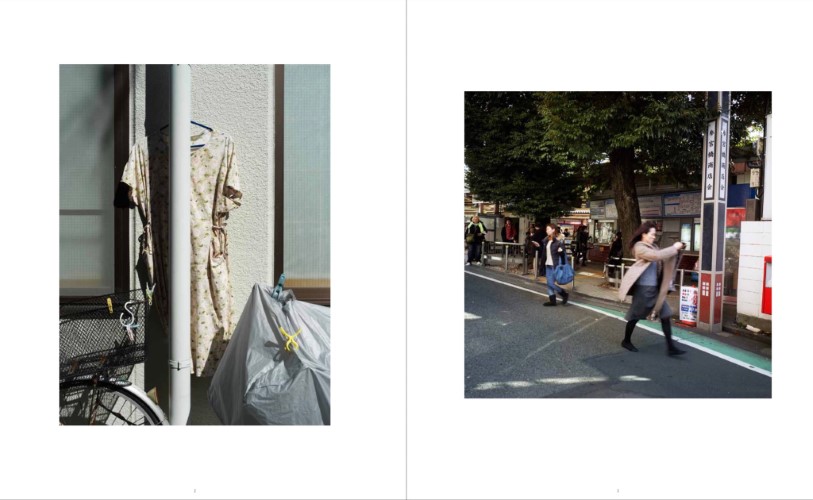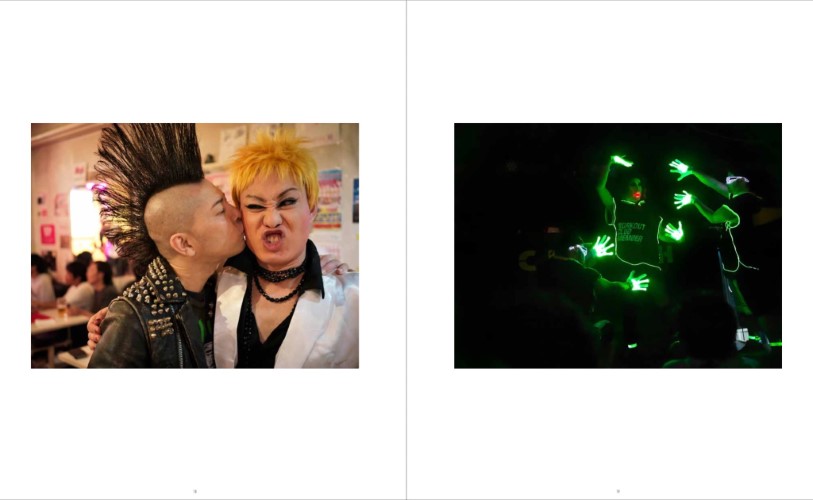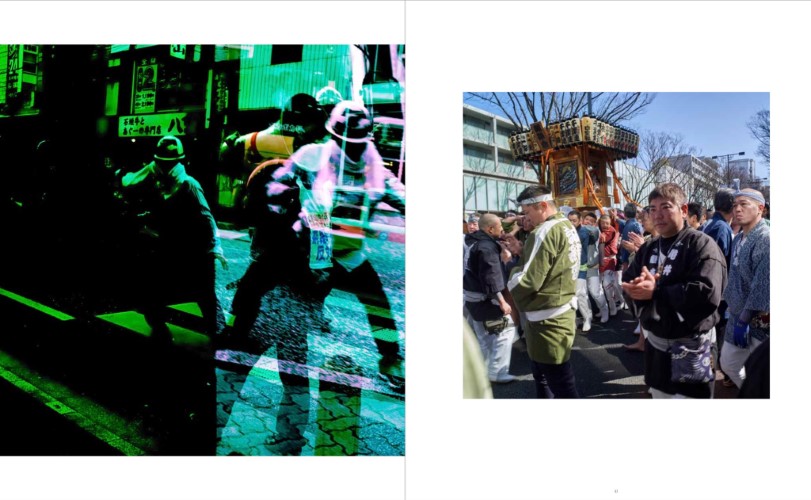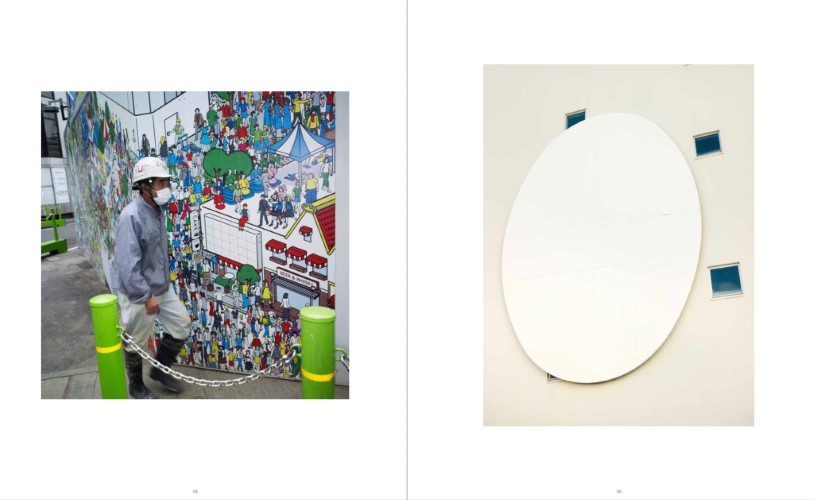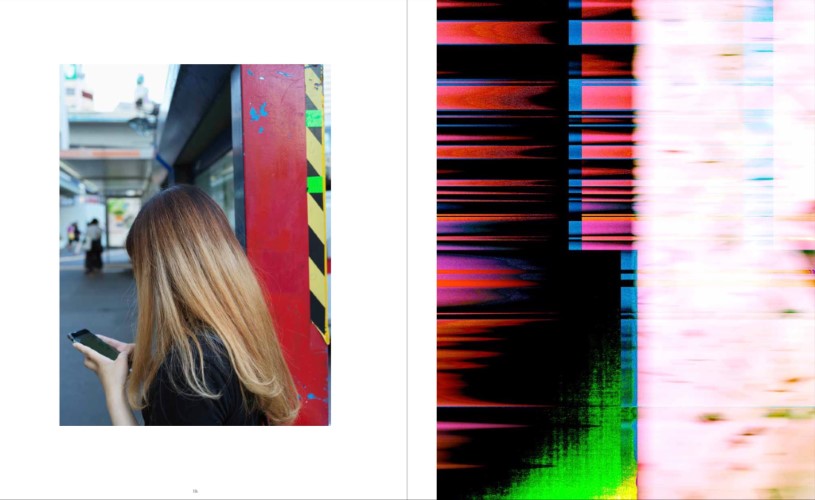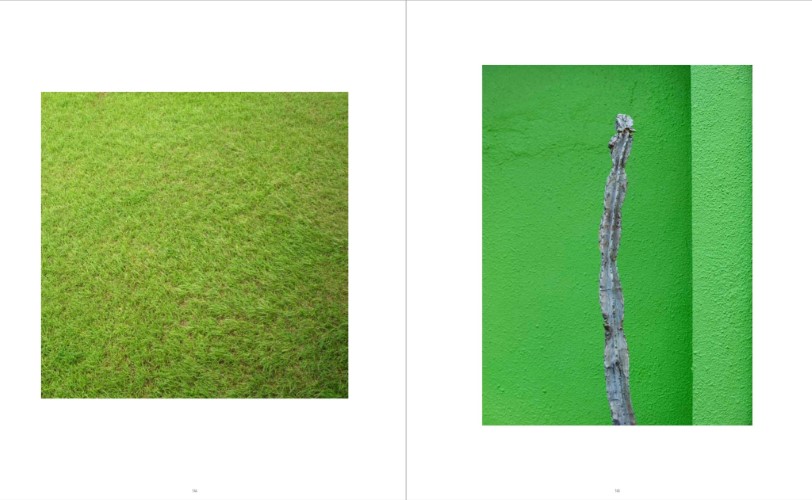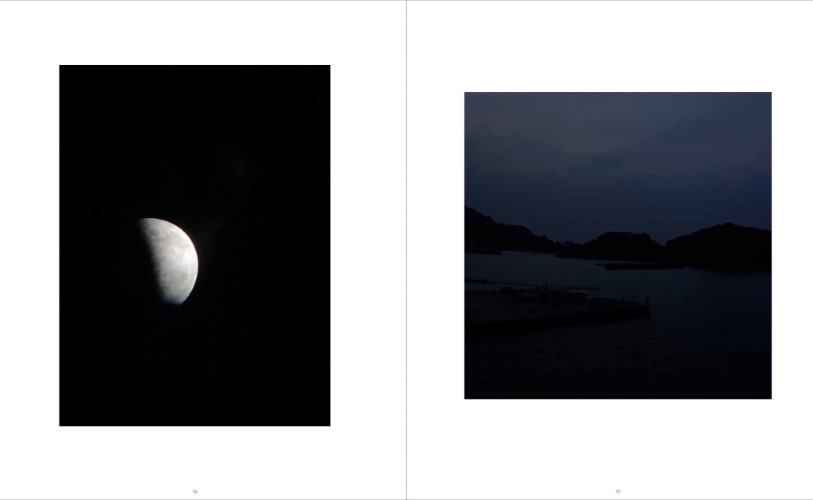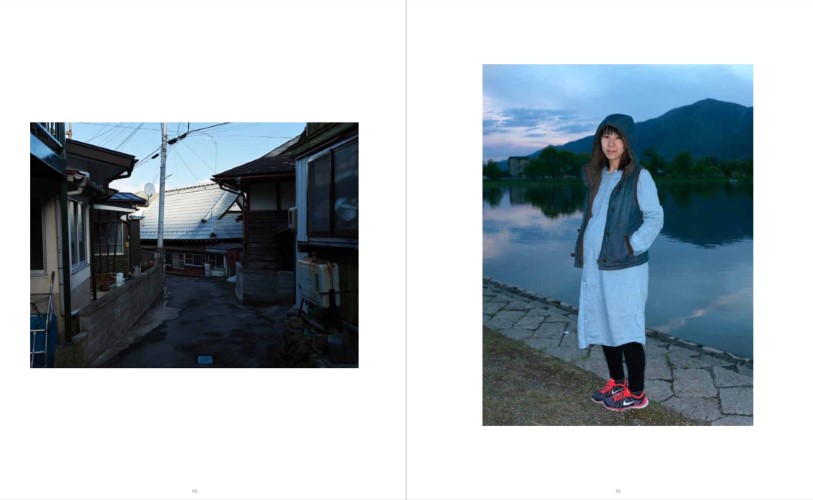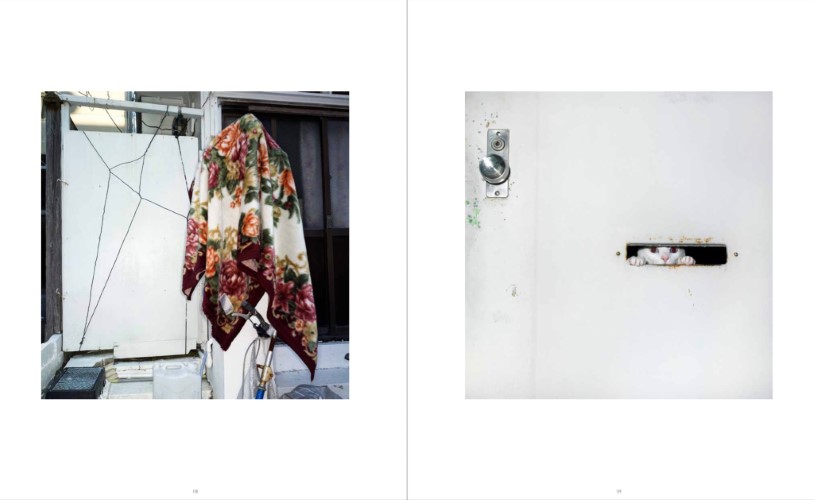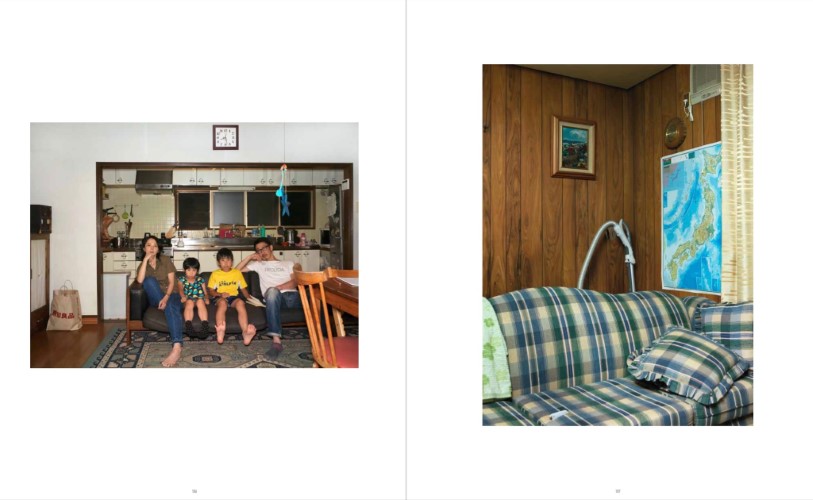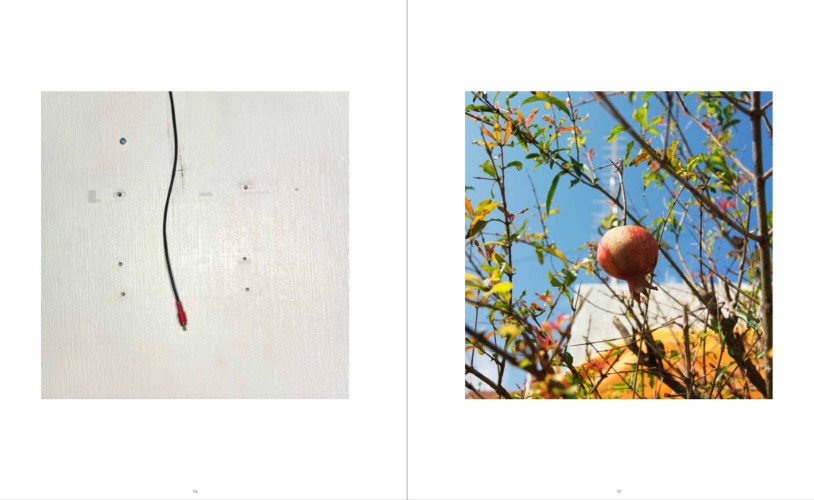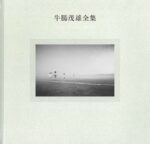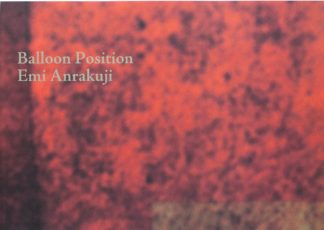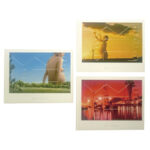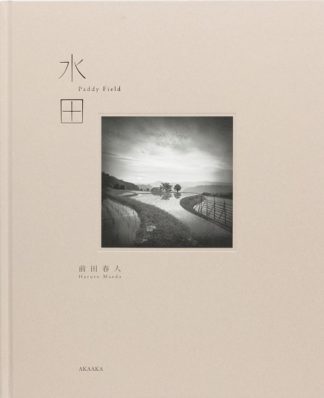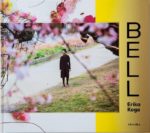« zk » est un symbole codé pour une vue spectaculaire (zekkei en japonais), et pour la vague d’émotion qui inonde tout le corps, via le sens de la vue, lorsque nous rencontrons certaines vues amorphes. Elle signifie la relation entre le paysage et l’émotion, entre l’extérieur et l’intérieur. Les sentiments qui émergent au moment où la vue est vue, la réaction du corps au déclencheur de la caméra, le processus de pensée de les interpréter, le soi qui englobe tout ce qui s’est passé jusqu’à présent. Les symboles sont la culture. La culture est le collectif. Le collectif est le mouvement. Le mouvement est l’existence. L’existence est la volonté. La volonté est l’extérieur de tout. Toutes les choses existent, pas pour quelqu’un ou quelque chose en particulier. Le monde est à la fois extérieur et intérieur. C’est seulement être qui relie tout, et être se chevauche avec le néant. Chevauchement, fluctuation, enchevêtrement. Aller au-delà du « sens. » Tout simplement exister en tant que partie du monde qui est.
Les gens ne peuvent s’empêcher de naître et de mourir. Vivre signifie accepter cette impuissance. Toutes les choses innommables jettent leurs ombres sous la lumière du monde. Personne ne peut voir le monde tel qu’il est, nous ne pouvons que tracer sans cesse ses ombres. Nous sommes simplement animés par des émotions, et même si nous sommes capables de penser aux choses, nous ne pouvons jamais vraiment savoir quoi que ce soit à leur sujet. Il n’y a certainement aucun moyen de savoir où nous allons nous-mêmes.
Où est la frontière entre la surface extérieure et l’intérieur ? Où se connectent le béton et l’abstrait ? Les objets, tels que nous les voyons, ne sont pas absolus. Voir les objets, c’est voir la relation entre eux, c’est simplement un état d’énergie qui coule. Le monde semble saturé d’objets et d’informations, mais même les espaces vides n’existent que par rapport aux objets, et pendant ce temps, le monde est rempli d’énergie et lié par des relations.
Il y a des choses que les photographies ne peuvent pas capturer. Néanmoins, ils nous permettent de nous engager et d’interpréter des choses auxquelles il est difficile de donner forme. Une photographie n’est rien d’autre qu’une photographie, et pour nous comme n’être rien d’autre que ce que nous sommes, le mieux que nous puissions espérer est de faire face à ce qui se passe devant nous et autour de nous, d’arrêter d’adopter une attitude distante ou provocante, abandonner l’idée que nous sommes indifférents et non impliqués. Tant de choses sont tristes, tant de choses sont douloureuses, c’est pourquoi je déteste un monde comme ça. C’est pourquoi même si je dois me débattre avec ces choses, me battre, avoir l’impression d’être écrasé, j’aime et j’admire les gens qui peuvent simplement être heureux d’être en vie, même si cela n’a aucun sens. Et au fil du temps, comme toujours, j’attends avec impatience le passé qui devait être, je regarde vers l’avenir qui est encore inconnu, et je regarde simplement ce qui est devant moi. Chez les gens qui sont toujours avec moi, les gens qui ont quitté ma vie, les gens que je n’ai rencontrés que brièvement. Au malheur, au vide, à l’isolement de l’errance perdue dans une jungle de béton. Sinon, toutes les connexions seraient brisées.
Une vue spectaculaire est une idée. Pour moi, une vue spectaculaire est ce que l’on voit quand on vit la vie avec les yeux grands ouverts, regardant droit devant.
En éditant ce livre de photos, j’ai été complètement confronté et inévitablement rappelé où je suis en ce moment. Ah, c’est comme ça que je vois le monde. C’est ainsi que je vis ma vie. Est-ce que je voulais être ainsi, et si oui, comment suis-je devenu comme je suis ? Est-ce que je viens de cliquer sur l’obturateur de l’appareil photo comme si hochant la tête pendant un bref instant? Suis-je que vide et creux? Si oui, comment veux-je vraiment que les choses soient ?
Juste avant d’avoir finalisé la mise en page du livre, je me suis réveillé d’un rêve dans lequel mon père m’avait tué, et j’ai été surpris de voir des larmes couler sur mes joues. L’émotion qui persistait n’était pas la peur, mais une sorte de solitude frisant la folie, ou le sentiment nostalgique d’être abandonné dans le vide.
Soudain, le chat de la famille Miyaji apparaît sous la table et se recroqueville sur le clavier sur lequel j’écris ceci. « 654eeeeeeeeeeeeeeeeeeeeeeeeeeeeeee »…
Comment puis-je vous voir d’ici? -(extrait « zk » de Ryuichi Ishikawa)
« zk » is a coded symbol for a spectacular view (zekkei in Japanese), and for the surge of emotion that floods the entire body, via the sense of sight, when we encounter certain amorphous views. It signifies the relationship between landscape and emotion, between outside and inside. The feelings that emerge the moment the view is seen, the body’s reaction to the camera’s shutter release, the thought process of interpreting them, the self which encompasses all that has occurred up to the present moment. Symbols are culture. Culture is the collective. The collective is movement. Movement is existence. Existence is will. Will is the exterior of everything. All things exist, not for the purpose of someone or something in particular. The world is both outside and inside. It is only being that connects everything, and being overlaps with nothingness. Overlapping, fluctuation, entanglement. Go beyond « meaning. » Simply exist as part of the world that is.
People cannot help being born and cannot help dying. To live means to accept that helplessness. All unnameable things cast their shadows under the light of the world. No one can see the world as it is, we can only ceaselessly trace its shadows. We are simply driven by emotions, and while we may be able to think about things, we can never truly know anything about them. There is certainly no way to know where we ourselves are headed.
Where is the boundary between outer surface and interior? Where do the concrete and the abstract connect? Objects, as we see them, are not absolute. To see objects is to see the relationship between them, it is simply a state of flowing energy. The world appears to be saturated with objects and information, but even blank spaces only exist in relation to objects, and all the while, the world is filled with energy and bound by relationships.
There are things that photographs cannot capture, too. Still, they enable us to engage with and interpret things to which it is difficult to give form. A photograph is nothing but a photograph, and for us similarly to be nothing other than what we are, the best we can hope for is to face what is occurring in front of us and around us, to stop adopting an aloof or defiant attitude, to abandon the idea that we are unconcerned and uninvolved. So many things are sad, so many things are painful, that’s why I hate a world like this. That’s why even if I have to grapple with these things, struggle, feel like I’m about to be crushed, I like and admire people who can simply be happy to be alive, even if there is no meaning to it. And as time goes by, as it always does, I long for the past that must have been, look ahead to the future that is still unknown, and simply look at what is in front of me. At the people who are always with me, the people who have left my life, the people I only encountered briefly. At the misery, the emptiness, the isolation of wandering lost in a concrete jungle. Because otherwise, all connections would be broken.
A spectacular view is an idea. To me, a spectacular view is whatever one sees when living life with eyes wide open, looking straight ahead.
In editing this photo book, I was thoroughly confronted with and inevitably reminded of where I am at the moment. Ah, this is how I see the world. This is how I live my life. Did I will myself to be this way, and if so, how did I become the way I am? Did I just click-click the camera shutter as if nodding my head for a brief instant? Am I that empty and hollow? If so, how do I really want things to be?
Just before I had finalized the layout of the book, I awoke from a dream in which my father had killed me, and was surprised to find tears streaming down my cheeks. The emotion that lingered was not fear, but a kind of loneliness bordering on insanity, or the nostalgic sense of being left behind in a void.
Suddenly, the Miyaji family cat appears from under the table and curls up on the keyboard on which I am writing this. « 654eeeeeeeeeeeeeeeeeeeeeeeeeeeeeeeeeeeeeeeeeee »…
How can I see you from here? -(from the text « zk » by Ryuichi Ishikawa)




